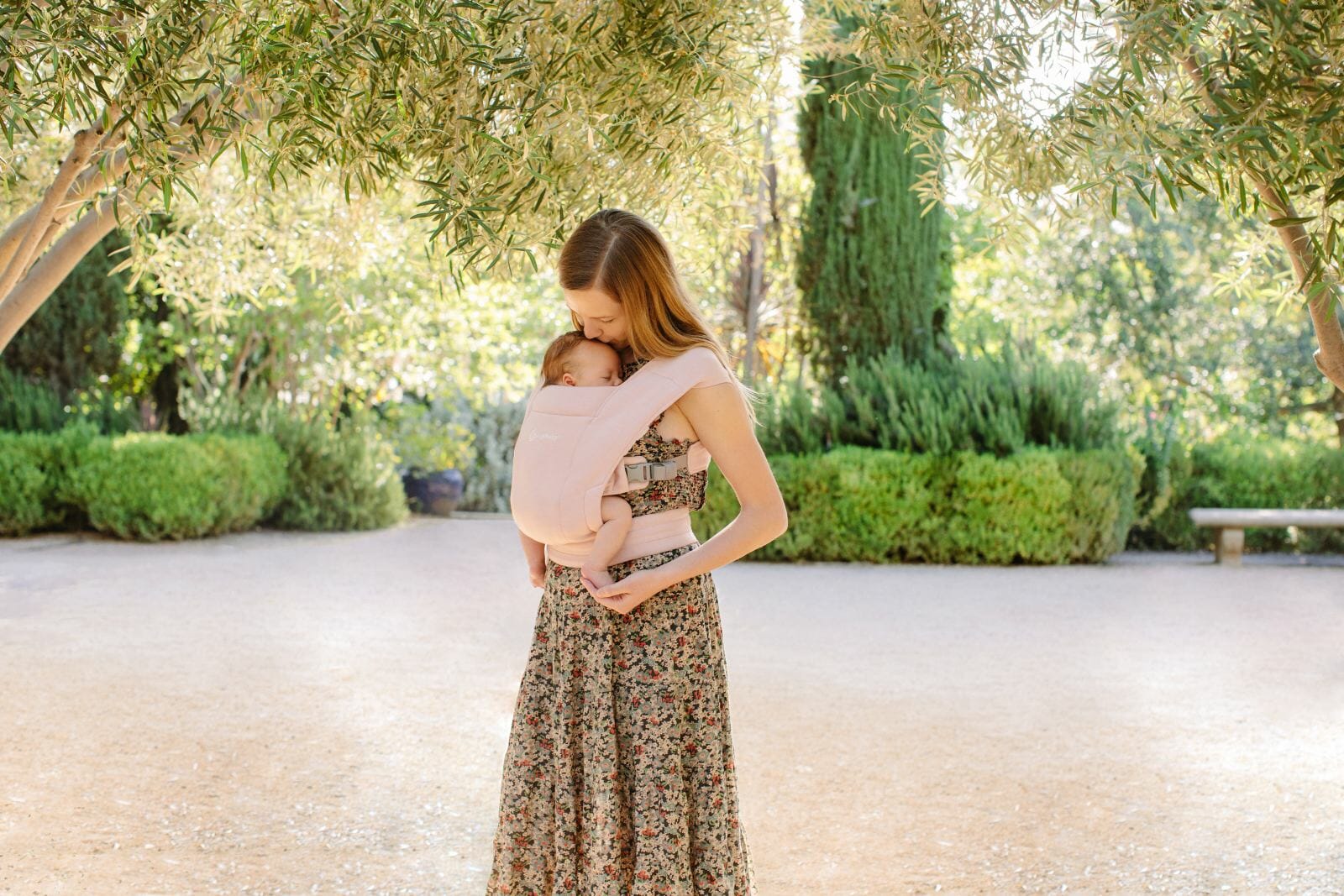Benefits of Babywearing

We carry our babies for almost a year while pregnant. And while in utero they’re warm and safe, our breaths and heartbeat their constant companions. But when baby is born, it’s a whole new world for them (and us too!). Luckily, we can babywear, which brings our little ones right back to us. Babywearing gives both of us that closeness again, while also providing baby with numerous benefits to development, both physically and emotionally. We call the first few months after birth the “fourth trimester,” and for good reason. Our little ones need us more than ever as they make the transition into this new, big world. And as an added bonus, our partners or caregivers can babywear too, allowing them to bond with baby in a new way, building a stronger bond between your child and the people who love her.
And really, a carried baby is a happy baby…and doesn’t that make parents happy? The closeness stimulates a beneficial hormone production (Oxytocin), resulting in a more intimate parental bond. Babywearing also adds a whole new level of convenience to your day — simply place your little one in the baby carrier or newborn wrap and go!
At Ergobaby, we believe babywearing is one of the single best things you can do for your family- and the best part is that it can be done anywhere, at anytime. It’s amazing to know that we have the ability to positively impact so many areas in development through doing something that brings so much joy to everyone involved. Babywearing is a family affair, and having your partner wear your little one aids in developing a close relationship and deep bond between the two of them, as well.
Benefits of babywearing:
- Strengthens the bond between parent and baby, as you maintain a closeness throughout your day, especially during the “4th trimester.”
- Happy Babies! Carried babies cry less. In a study published in the journal Pediatrics, researchers found that babywearing for three hours a day reduced infant crying by 43 percent overall and 54 percent during evening hours.
- May help alleviate postpartum depression. Mothers providing daily skin-to-skin contact to their newborn had significantly lower scores on the depression scales.
- Aids in baby’s development, both physically and emotionally. And did you know that a carried baby is generally calmer thanks to all of her primal/survival needs being met?
- Helps mothers respond to their babies. In a recent study, mothers who primarily choose babywearing for transporting their baby were shown to be more responsive to their babies, even when not wearing their babies.
- Helps mothers meet their breastfeeding goals. In a recent study, it was demonstrated that providing infant carriers to pregnant parents significantly improved breastfeeding outcomes at six months postpartum.
- Decreases risk of SIDS and flat-head syndrome, while promoting neural development, respiratory and gastrointestinal health, and aiding in balance.
- Helps’ build parents confidence. A large part of feeling confident as a parent is the ability to read our babies’ cues successfully. By carrying our babies close, we are more attuned to baby and able to meet their needs. This in turn empowers parents to feel more competent and secure.
- Allows parents or caregivers to be “hands-free,” while baby is in the carrier, and promotes exploring, discovering and navigating safely and easily without having to maneuver a stroller.
- Improves overall maternal physical health (decreased sleep disturbances by 18% and gastrointestinal problems by 26%)*
- Improves breastfeeding rates (a large correlation between breastfeeding length and number of weeks using infant carriers, r=.42)*
- Increases the likelihood of reaching breastfeeding milestones (Odds of breastfeeding at 6 months were 1.08 times higher for each week the mother used the infant carrier)*
- Allows breastfeeding to be done on the go, and discreetly too, if you want to be covered up. And as an added bonus, breastmilk production is boosted with close contact with baby.
- Promotes early language development. Babies learn by watching faces, and babywearing puts your little one at conversational height- “the best seat in the house.”
- Allows parents to see more of the world through baby’s eyes. And your babies get to discover their new world from the safety and comfort of your body.
- Fosters a closeness through toddlerhood. Toddlers can be worn too, reminding them of their “home base,” and allowing that bond to continue as they grow.
Babywearing takes our babies back to their safe place- reminding them that we are home, their little bodies pressed up against ours, the beat of our heart right alongside theirs. With babywearing, love carries on.
*Sources:
Williams, L. R. (2018, January). Can infant carrying improve mother-infant interactions? Evidence from an intervention with vulnerable adolescent mothers. Paper presented at the Society for Social Work and Research, Washington, D. C.
Williams, L. R. (2017, June). The still-face paradigm: Babywearing as an evidence-based intervention for young mothers. Paper presented at the Society for Prevention Research, Washington, D.C.
Williams, L. R. (2017, January). Babywearing as an evidence-based intervention for young mothers. Poster presented at the Society for Social Work and Research, New Orleans, LA.

